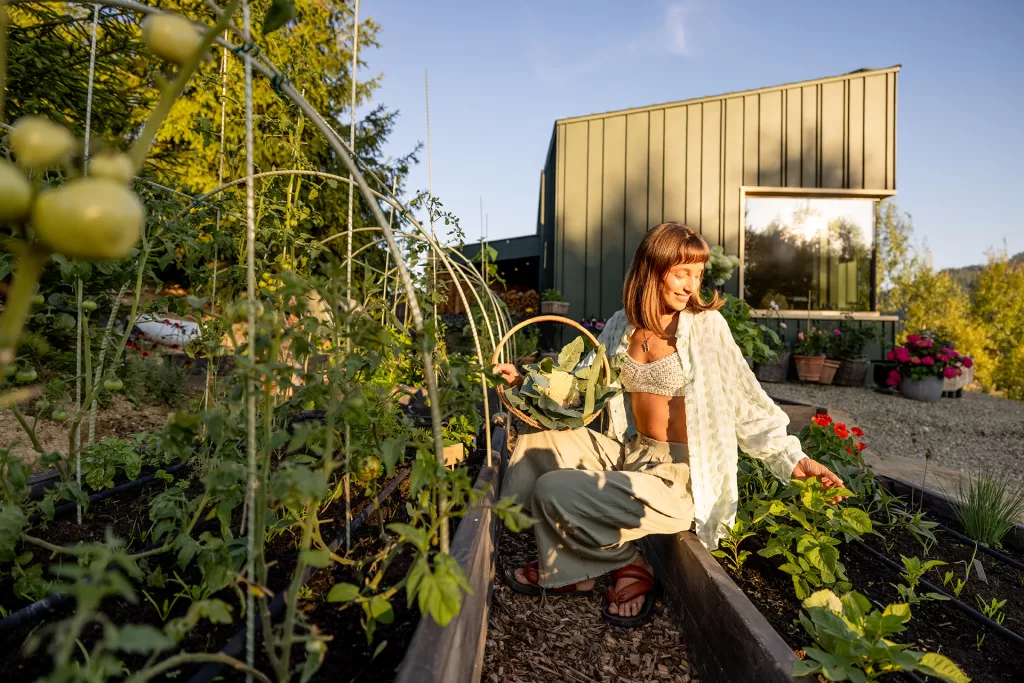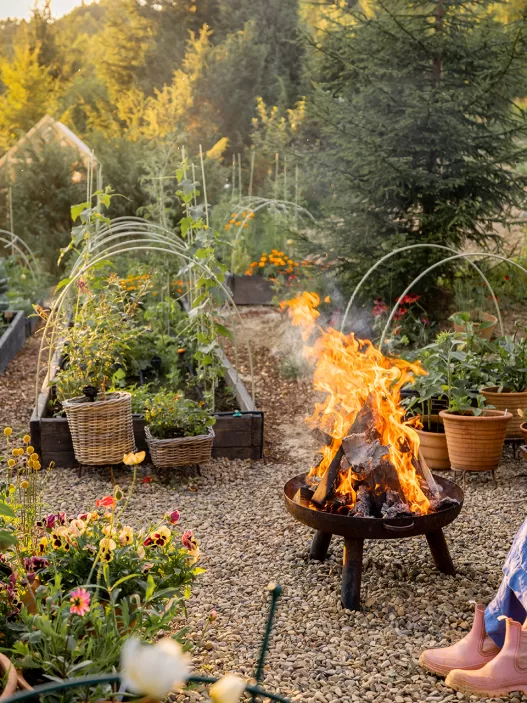
So, you wanna grow your own veggies? Good call. Nothing beats the feeling of biting into a fresh tomato that you grew—no weird chemicals, no overpriced grocery bills, just pure, homegrown goodness. But let’s be real: starting a vegetable garden can feel overwhelming AF if you don’t know where to begin.
Luckily, I got you covered. Here’s your no-BS guide to getting your hands dirty and growing a garden that’ll make your neighbors jealous.
Step 1: Pick the Perfect Spot (Because Plants Ain’t Vampires)
Your veggies need sunlight—a lot of it. Aim for at least 6 hours of direct sunlight a day. No sun? No problem. You can still grow leafy greens like spinach, lettuce, and herbs in partial shade.
What to look for:
- Sun-drenched spots (your tomatoes will love you for it).
- Close to a water source (because dragging hoses across your yard sucks).
- Good drainage (no swamp zones, please).
Pro Tip: Test the spot by standing there at different times of the day. If it’s shady more often than not, pick a better spot or pivot to shade-friendly plants.
Step 2: Start Small (Don’t Go Full Farmer Just Yet)
Dreaming of a backyard that looks like a scene from Farmer’s Almanac? Hold up. Start small, master the basics, then scale up.
Options to consider:
- Container gardens – Great if you’ve got limited space or commitment issues.
- Raised beds – Easier to manage, looks clean, and helps with soil quality.
- In-ground gardens – Perfect if you’re ready to go all-in and have good soil.
Size matters: A 4×4 ft bed is a solid starting point for beginners. Manageable, not overwhelming, and perfect for a variety of crops.
Step 3: Prep the Soil (Because Your Veggies Deserve a Good Home)
Your soil is everything. You wouldn’t build a house on a shaky foundation, so don’t expect your plants to thrive in lousy dirt. Here’s how to level up your soil game:
- Clear the area – Get rid of grass, weeds, and any lurking debris.
- Improve it – Mix in compost, aged manure, or organic matter to boost nutrients.
- Check drainage – If water sits for too long, consider adding sand or compost to improve it.
- PH test it – Grab a cheap test kit and make sure your soil is slightly acidic (around 6.0-7.0 is ideal).
Pro Tip: Don’t overthink it. Healthy, rich, dark soil = happy plants.
Step 4: Pick Your Veggies (Grow What You’ll Actually Eat)
Look, don’t go planting Brussels sprouts if you gag at the thought of eating them. Stick to veggies you actually like and ones that are easy to grow.
Beginner-friendly vegetables:
- Tomatoes – These bad boys are almost foolproof.
- Lettuce – Fast-growing and perfect for salads.
- Cucumbers – Great for slicing, pickling, and flexing on your friends.
- Peppers – Low-maintenance and versatile.
- Carrots – Because pulling them out of the ground is oddly satisfying.
Pro Tip: Start with seedlings (young plants) if you’re not ready for the whole “starting from seed” journey.
Step 5: Planting Like a Pro (Spacing is Key, Don’t Cram ‘Em In)
Each veggie has its own personal bubble, so don’t crowd them like it’s a packed subway. Check the spacing recommendations on seed packets or plant tags—trust me, your plants need breathing room to thrive.
Basic planting tips:
- Dig holes deep enough to cover roots properly.
- Water right after planting to help them settle in.
- Label your rows or beds—because you will forget what’s where.
Pro Tip: Stagger your planting times to keep a steady supply of fresh produce rolling in.
Step 6: Keep It Alive (Water, Mulch, and Chill)
Congrats, you planted your garden. Now comes the “keeping it alive” part. Here’s how to not kill your plants:
- Water consistently: Aim for 1 inch of water per week—morning watering is best.
- Mulch it up: Mulch (straw, wood chips, or leaves) helps retain moisture and keeps weeds in check.
- Weed patrol: Pull weeds before they take over your garden like an uninvited house guest.
Pro Tip: Overwatering is just as bad as underwatering—check soil moisture before you drown your plants.
Step 7: Handle Pests Like a Boss (Because Bugs Will Try You)
Bugs and critters will try to feast on your hard work—don’t let them. Here’s how to keep them in check:
- Natural deterrents: Neem oil, companion planting (like basil with tomatoes), and diatomaceous earth.
- Physical barriers: Row covers, nets, and raised beds.
- Good bugs: Ladybugs and praying mantises are your allies—get them working for you.
Pro Tip: Spot problems early—yellow leaves, holes, or wilting plants are usually signs something’s up.
Step 8: Harvest Like a Pro (The Rewarding Part)
When your veggies are ready, don’t let them overstay their welcome on the plant. Pick ‘em when they’re ripe, and you’ll encourage more growth.
How to tell it’s time:
- Tomatoes? Bright red (or whatever color they should be).
- Lettuce? Snip outer leaves when they’re big enough to eat.
- Cucumbers? Firm and the right size for their type.
Pro Tip: Harvest early in the morning for the freshest flavors.
Bonus: Stay Chill and Keep Learning
Gardening is a journey, not a one-time project. Some plants will thrive, some might flop—and that’s okay. Learn, adjust, and try again next season.
Common beginner mistakes to avoid:
- Overwatering (your plants aren’t fish).
- Ignoring spacing (crowding leads to weak plants).
- Forgetting to weed (they will take over faster than you think).
Ready to Dig In?
Starting a vegetable garden at home isn’t just about growing food—it’s about learning, patience, and getting your hands dirty in the best way possible. Whether you’re doing it to save money, eat healthier, or just because it’s kinda cool, gardening is one of the most rewarding things you can do.
So grab those gloves, start small, and watch your hard work literally grow.
What are you planting this season? Drop a comment and let’s talk garden goals!
















